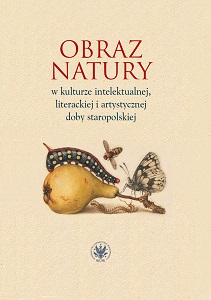„Bóg i lepsza natura” Stwórca i stworzenie w dawnej polskiej myśli teologicznej Rekonesans
“God and Better Nature”. The Creator and Creation in Old Polish Theological Thought. A Reconnaissance
Author(s): Elwira Buszewicz
Subject(s): Cultural history, Theoretical Linguistics, Studies of Literature
Published by: Wydawnictwa Uniwersytetu Warszawskiego
Keywords: natura naturata; nature in theological thought; humanism and theology; theology and reformation; theology and science; theology and new philosophical trends; theological thought in sermons
Summary/Abstract: The article attempts to establish to what extent early modern Polish theological thought influenced cosmological notions (the image of the world) and the relation between the Creator and the creation. Theological thought at Cracow Academy began at the time when the discipline aimed to explain the whole world and the scholars used methods appropriate to other disciplines (e.g. philosophy). The education system based on the seven liberal arts favoured interdisciplinarity, which resulted from medieval scientific universalism. Academic theology in Poland was scholastic and based on commentaries to Peter Lombard’s sentences. The interpretation of such commentaries can be important from a theological perspective. Academic theology developed and changed, evolving towards biblical and theological problems. The reflections on the Creator or the creation often resulted from biblical commentaries (e.g. Scopus biblicus by Wojciech Nowopolczyk). Scholasticism was not always adequate as it was often challenged by new cosmological theories (heliocentrism), new ideas and religious trends (humanism, reformation, antitrinitarism). The theological response to them was either irenic or agonistic. An interesting phenomenon which connected European and Polish theological thought concerning nature is the work of Annibale Roselli, the author of the theological commentary to Pymander. It was a part of Corpus hermeticum. God and the creation are also present in Jesuit theological thought. In the 17th century theology has to take a stance towards new philosophical trends influencing perception of the world (Galileo and the importance of the mathematical order of reality, Hugo Grotius and the idea of natural law independent of God, etc.); in the 18th century theology will be challenged by deism and materialistic atomism. This article explores how the traditional, catholic image of the Creator and the creation was transformed as a result of its contact with humanism (Jan Trzciana, Annibale Rosseli, Mikołaj Dłuski) and heterodox beliefs, and how the latter developed new theological arguments (e.g. Dudycz’s antitrinitarian doctrine). The last part of the article is devoted to nature metaphors used by medieval and renaissance preachers. Philosophical and theological treatises influenced by Platonism and humanism show dignity and greatness of man, whereas medieval and baroque sermons expose vanity of creation tainted by sin.
Book: Obraz natury w kulturze intelektualnej, literackiej i artystycznej doby staropolskiej
- Page Range: 20-48
- Page Count: 29
- Publication Year: 2020
- Language: Polish
- Content File-PDF

